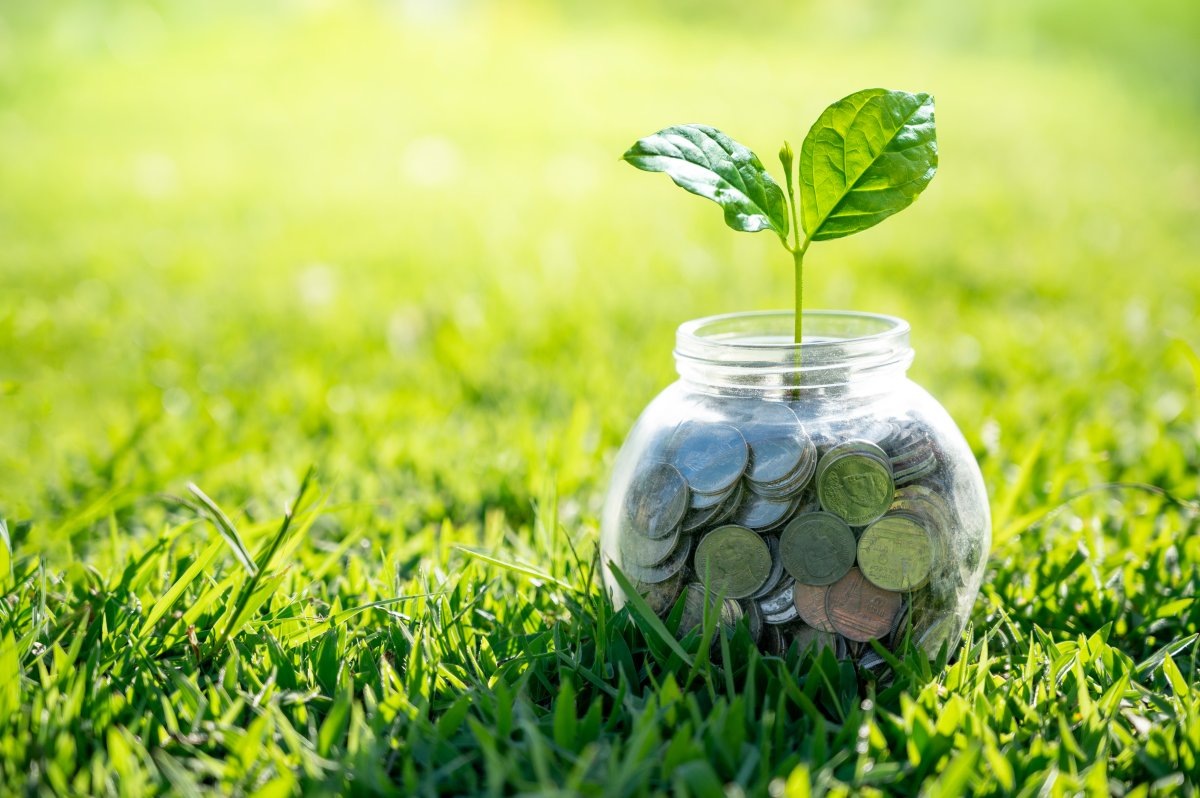From extreme floods in British Columbia, to severe storms in Toronto and in Atlantic Canada, many Canadians experienced a year of climate-fueled weather havoc in 2021.

As 2022 kicks off, fear of an ever-worsening climate crisis is encouraging more and more and more consumers – along with big investors – to think about conscious, or ‘green’ investing.
For years, scientists have warned of the impending dangers from the unabated burning of fossil fuels. Now, as climate change accelerates to the point of causing irreversible damage to people and the planet, the world of finance is latching on to the urgent need to transition to more sustainable investment solutions – ones that won’t pollute air, water and soil or cost trillions to clean up.
The upshot?
There is lots of money to be made, and investors are getting in on the action.
“It’s a tsunami compared to what was around a few years ago,” says Tom Rand, a managing partner at ArcTern Venture Capital in Toronto, and author of The Case for Climate Capitalism.

In 2020, green investments rose to $35.3-trillion U.S. in the world’s five biggest financial markets – the United States, Europe, Australasia, Japan and Canada. That sum represented more than a third of all assets in those big markets. Investments in Canada had the biggest growth – a 48 per cent increase over two years.
There is no doubt a shift is happening.
“I think we’re going to see a lot more of that capital flow towards these companies, industries and sectors that are transitioning to … net-zero,” says Tamara Close, founder of Close Group Consulting, a financial advisory firm based in Montreal.
The question is: is it fast enough?
What is green investing?
“Green investing is, in my mind, the deployment of capital, whether from individuals or institutions, primarily to resolving the conflict between economic activity and environmental harm,” says Rand.
“Ultimately,” he adds, “that means mitigating climate risk.”
This shift is happening all over Canada.
In Alberta, jobs in the clean energy sector are forecast to grow by 164 per cent this decade, according to Clean Energy Canada, a group that advocates for more renewable energy development in the country.
Atlantic Canada is witnessing its own boom in research and innovation in battery technology to power the next generation of electric vehicles.

But here’s the catch. While change is happening, it’s not happening fast enough to solve the climate crisis.
Canada is a massive resource-producing nation. Even though less than a tenth of Canadian GDP comes from oil and gas, fossil fuels power the entire global economy, including Canada’s.
- As Loblaw boycott begins, what to know about all the company’s brands
- $34B Trans Mountain pipeline expansion project opens after years of construction
- Toxic metals in vapes may pose major health risks for youth, study finds
- Nearly 60% of retirees are supporting adult children financially, survey finds
He says for pension funds and the big banks to divest at a faster clip, the entire economy must shift away from fossil fuels.
“Until we get our economy to net-zero,” he says, “it’s a bit like pushing on a string.”
Environment, sustainability, governance
The good news is that the international financial sector is seeing the dollars and cents involved in a green transition — and shoveling money into green investments.
Financial heavyweights like Mark Carney, who spearheads the United Nation’s effort toward a renewable energy transition, as well as Larry Fink, who runs the world’s biggest asset management firm, are both vocal about the risk posed to financial markets from a warming planet.
But actually measuring how well a company or fund is doing when it comes to sustainability can be tricky — and greenwashing is a real problem, according to industry watchers and fund managers.
And, they caution, just because a stock or fund is ‘green’ does not guarantee that it will deliver better returns.
But what is clear, says Tamara Close, is that a shift to a non-polluting economy is “putting a lot of pressure on various sectors, various industries and certain companies to come up with a net-zero business model.”
Investors typically track a company or fund’s green ‘credentials’ using environment, sustainability and governance (ESG) metrics. There is a range of ways to assess a company’s ESG rating, from how executive compensation is tied to a company’s climate goals, to the environmental chops of its board of directors.
Though there are organizations that track environmental metrics, ESG disclosure is not a legal obligation for firms or funds in North America (in Europe, firms are starting to abide by legal rules for environmental ratings). Neither is there one set methodology or rubric for assessing a company’s ESG rating.
These are among the blind spots in assessing how sustainable a company or fund actually is. So it’s up to investors, fund managers and individual consumers to ask questions.
But, Close says that what is happening more and more is that corporate leaders are starting to see that ESG targets “are actually a driver for firm value, and for market value.”
In other words, it pays to be green.
The need for regs
Jessica Dempsey, a UBC associate professor of geography, who studies the intersection of politics and finance, says the biggest gap in green investing is the lack of regulation in the financial sector.
That public sector regulation, emphasizes Tom Rand, is critical.
“The private sector is not able to act in cohesion,” he says. “They’re all going to look after their own self-interest; it’s how they’re wired, and that’s what they have an obligation to do.”
Though there are many firms and funds that are putting money in the clean-energy economy, Rand says cohesion is required for the big shift that’s required to actually find its groove.
“When you have a band, an orchestra, you want the trumpets to play in tune with the oboe. You need a conductor. The conductor is the public sector” – meaning everything from international organizations like the World Trade Organization to national and provincial governments.
“Without a regulatory framework put in place by a public sector, it’s going to be very hard to get that massive orchestra playing in time, and playing in tune.”







Comments